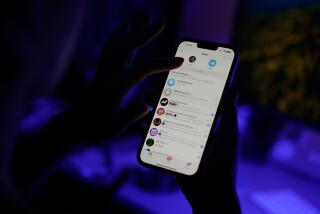3 Found Guilty in Plot to Bomb U.S. Airliners
- Share via
NEW YORK — A federal jury on Thursday found Ramzi Ahmed Yousef, the alleged mastermind of the World Trade Center bombing, and two co-defendants guilty of plotting to blow up a dozen U.S. jetliners during 48 hours of terror over the Pacific Ocean.
More than 4,000 people aboard the planes could have been killed had the 1995 plan succeeded, prosecutors told the jury of seven men and five women.
The verdict added to a string of government successes in a series of trials after the bombing of the trade center in Manhattan in February 1993. Six people were killed and more than 1,000 were injured in that attack. Yousef faces trial later in that case.
Yousef and his co-defendants, Abdul Hakim Murad and Wali Khan Amin Shah--who are to be sentenced Dec. 5--showed no emotion upon hearing the verdicts, reached on the fourth day of deliberations. The men face mandatory life sentences. Lawyers said all three planned to appeal.
With the FBI and the National Transportation Safety Board still investigating the possibilities that a bomb or a missile downed TWA Flight 800 on July 17 off the coast of Long Island, N.Y., killing 230 people, the jury’s decision Thursday received added attention.
Yousef’s followers would be high on the list of potential suspects if the TWA crash is found to be a criminal act, investigators said.
The plot to destroy the commercial airliners in Asia was never carried out. It was foiled when investigators found the apartment where Yousef and his co-conspirators were manufacturing explosives. Yousef was also convicted of staging a trial run--bombing a Philippine airliner in 1994, killing a Japanese passenger and injuring several others.
“The rule of law has prevailed today,” said James K. Kallstrom, assistant FBI director in charge of the New York field office.
U.S. Atty. Mary Jo White said that if the defendants had been able to carry out their mass attack, the horror would have been “almost impossible to comprehend.”
Judge Kevin T. Duffy said after the jury reached its verdict that Yousef, 28, who acted as his own lawyer, had received a fair trial.
The jury began its deliberations last week and adjourned for the Labor Day weekend. When they returned, it was learned that a female juror had telephoned a government witness to set up a meeting after the trial. After Duffy interviewed the woman, he decided deliberations could continue.
In contrast to the government’s case--which lasted a dozen weeks and relied on testimony from 47 witnesses--the defense spent less than a week seeking to cast doubt on arguments that Yousef planned to carry out the plot to bomb a dozen airliners.
Central to the prosecution’s case was a white laptop computer that government lawyers said belonged to Yousef and contained airline schedules and the alleged times the bombs were to be detonated.
At the top of the screen containing the listings for Delta, Northwest and United airlines flights was the word bojinka, which prosecutors charged was the code name given to the plot, designed to weaken U.S. support for Israel.
“Thousands of passengers would have died . . . only because they happened to be on a particular flight on a particular day,” Assistant U.S. Atty. Michael J. Garcia said.
The plot was thwarted by sloppiness in mixing bomb-making materials, which caused a fire in a Manila apartment rented by Yousef, prosecutors contended.
Yousef sought to rebut the evidence by bringing a computer expert to the witness stand. Under questioning, Lance Leventhal demonstrated the ease with which entries in the computer could be changed--including altering the computer’s clock to disguise the time that files were recorded.
It was part of the defense’s overall strategy to suggest to the jury that Yousef and his co-defendants were framed by Philippine police.
In an attempt to bolster that claim, two medical experts--a forensic psychologist and a psychiatrist--testified that Murad’s behavior supported his statements that he had been tortured overseas while in police custody.
Some of the most damaging testimony against Yousef came from Brian G. Parr, a Secret Service agent who accompanied the defendant on the plane from Pakistan, where Yousef was seized. He had fled the United States hours after the trade center was bombed.
Parr told the court that on the flight to New York, Yousef boasted about planning to bomb the airliners and asked if his Toshiba laptop computer had been found.
Prosecutors charged that as a test for the massive plot, Yousef had planted a bomb that was detonated aboard a Philippine airliner. A Japanese businessman was killed and several other passengers were injured.
Glancing around the courtroom, flight attendant Maria Delacruz identified Yousef as the passenger who had been in the seat that later exploded.
Prosecutors contended Yousef assembled the bomb from materials he carried aboard the plane--a watch that was used for the timer, a battery and explosive materials hidden in a contact lens fluid bottle.
Government lawyers told the jury that Yousef stashed the bomb in a life-jacket pouch beneath the seat, then got off the aircraft at a stop before the blast.
When Yousef, a chemical engineer by training, announced at the beginning of the trial that he wanted to act as his own lawyer, Duffy warned him against it.
During the 12-week trial, Yousef certainly did not exhibit the skill of a veteran defense lawyer, but he did manage to question witnesses in a coherent manner.
More to Read
Sign up for Essential California
The most important California stories and recommendations in your inbox every morning.
You may occasionally receive promotional content from the Los Angeles Times.










